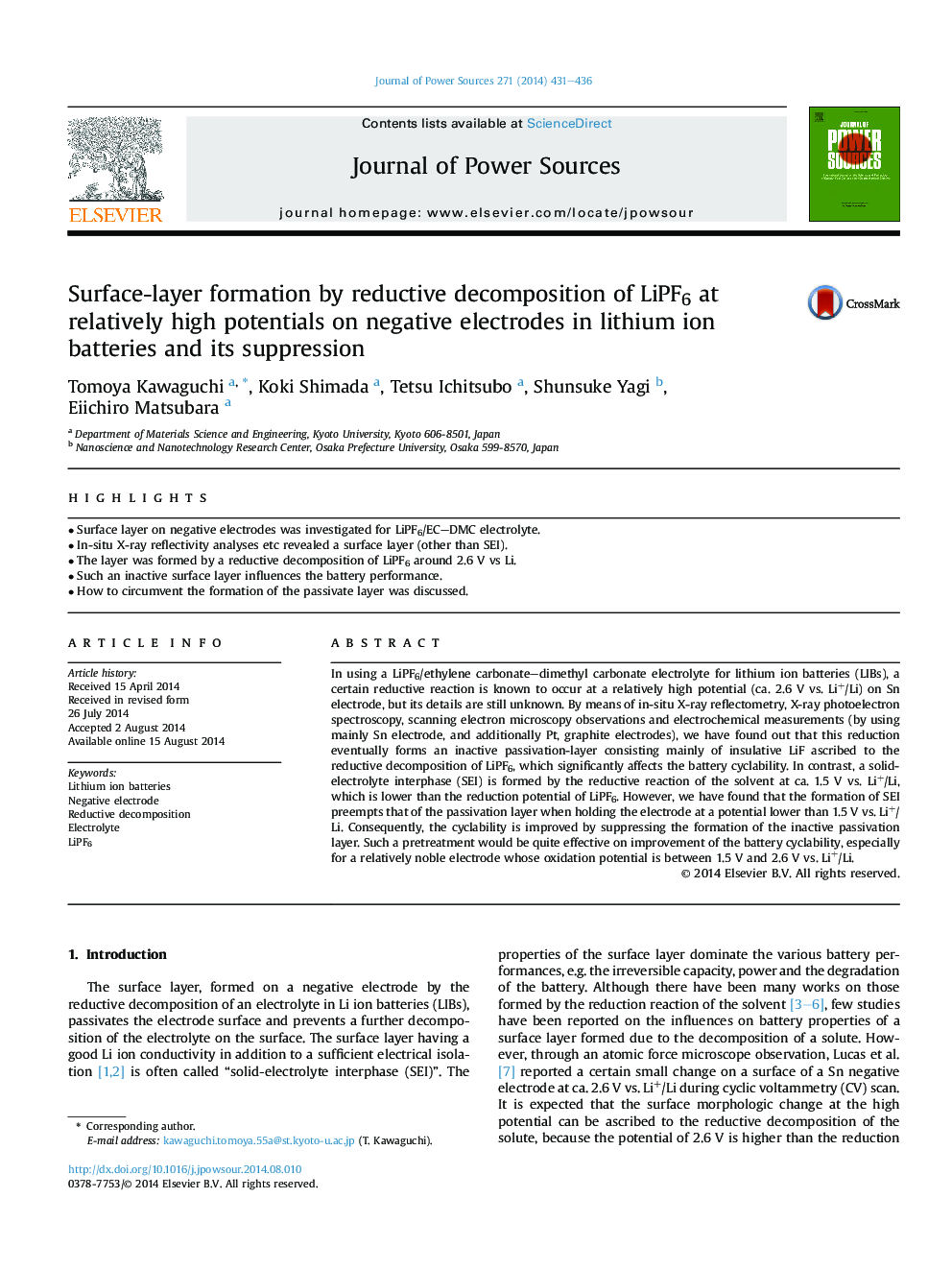| کد مقاله | کد نشریه | سال انتشار | مقاله انگلیسی | نسخه تمام متن |
|---|---|---|---|---|
| 7735811 | 1497961 | 2014 | 6 صفحه PDF | دانلود رایگان |
عنوان انگلیسی مقاله ISI
Surface-layer formation by reductive decomposition of LiPF6 at relatively high potentials on negative electrodes in lithium ion batteries and its suppression
ترجمه فارسی عنوان
تشکیل لایه سطحی با تجزیه واکنشی لیپوفل 6 در پتانسیل نسبتا بالا بر روی الکترودهای منفی در باتری های یون لیتیوم و سرکوب آن
دانلود مقاله + سفارش ترجمه
دانلود مقاله ISI انگلیسی
رایگان برای ایرانیان
کلمات کلیدی
موضوعات مرتبط
مهندسی و علوم پایه
شیمی
الکتروشیمی
چکیده انگلیسی
In using a LiPF6/ethylene carbonate-dimethyl carbonate electrolyte for lithium ion batteries (LIBs), a certain reductive reaction is known to occur at a relatively high potential (ca. 2.6Â V vs. Li+/Li) on Sn electrode, but its details are still unknown. By means of in-situ X-ray reflectometry, X-ray photoelectron spectroscopy, scanning electron microscopy observations and electrochemical measurements (by using mainly Sn electrode, and additionally Pt, graphite electrodes), we have found out that this reduction eventually forms an inactive passivation-layer consisting mainly of insulative LiF ascribed to the reductive decomposition of LiPF6, which significantly affects the battery cyclability. In contrast, a solid-electrolyte interphase (SEI) is formed by the reductive reaction of the solvent at ca. 1.5Â V vs. Li+/Li, which is lower than the reduction potential of LiPF6. However, we have found that the formation of SEI preempts that of the passivation layer when holding the electrode at a potential lower than 1.5Â V vs. Li+/Li. Consequently, the cyclability is improved by suppressing the formation of the inactive passivation layer. Such a pretreatment would be quite effective on improvement of the battery cyclability, especially for a relatively noble electrode whose oxidation potential is between 1.5Â V and 2.6Â V vs. Li+/Li.
ناشر
Database: Elsevier - ScienceDirect (ساینس دایرکت)
Journal: Journal of Power Sources - Volume 271, 20 December 2014, Pages 431-436
Journal: Journal of Power Sources - Volume 271, 20 December 2014, Pages 431-436
نویسندگان
Tomoya Kawaguchi, Koki Shimada, Tetsu Ichitsubo, Shunsuke Yagi, Eiichiro Matsubara,
